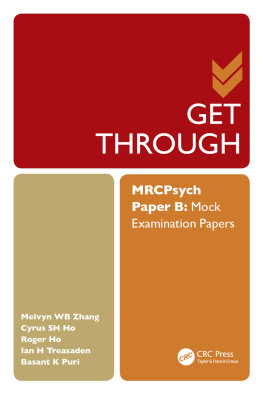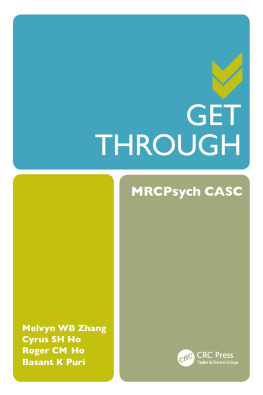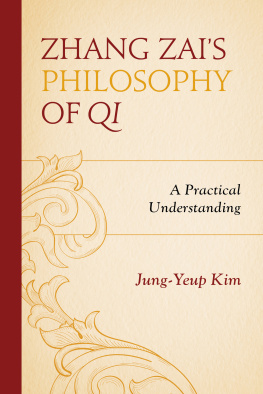Zhang - Weather radar polarimetry
Here you can read online Zhang - Weather radar polarimetry full text of the book (entire story) in english for free. Download pdf and epub, get meaning, cover and reviews about this ebook. year: 2016, publisher: CRC Press, genre: Home and family. Description of the work, (preface) as well as reviews are available. Best literature library LitArk.com created for fans of good reading and offers a wide selection of genres:
Romance novel
Science fiction
Adventure
Detective
Science
History
Home and family
Prose
Art
Politics
Computer
Non-fiction
Religion
Business
Children
Humor
Choose a favorite category and find really read worthwhile books. Enjoy immersion in the world of imagination, feel the emotions of the characters or learn something new for yourself, make an fascinating discovery.
- Book:Weather radar polarimetry
- Author:
- Publisher:CRC Press
- Genre:
- Year:2016
- Rating:3 / 5
- Favourites:Add to favourites
- Your mark:
- 60
- 1
- 2
- 3
- 4
- 5
Weather radar polarimetry: summary, description and annotation
We offer to read an annotation, description, summary or preface (depends on what the author of the book "Weather radar polarimetry" wrote himself). If you haven't found the necessary information about the book — write in the comments, we will try to find it.
Zhang: author's other books
Who wrote Weather radar polarimetry? Find out the surname, the name of the author of the book and a list of all author's works by series.
Weather radar polarimetry — read online for free the complete book (whole text) full work
Below is the text of the book, divided by pages. System saving the place of the last page read, allows you to conveniently read the book "Weather radar polarimetry" online for free, without having to search again every time where you left off. Put a bookmark, and you can go to the page where you finished reading at any time.
Font size:
Interval:
Bookmark:

Weather Radar Polarimetry
Weather Radar Polarimetry
Guifu Zhang

MATLAB and Simulink are trademarks of The MathWorks, Inc. and are used with permission. The MathWorks does not warrant the accuracy of the text or exercises in this book. This books use or discussion of MATLAB and Simulink software or related products does not constitute endorsement or sponsorship by The MathWorks of a particular pedagogical approach or particular use of the MATLAB and Simulink software.
CRC Press
Taylor & Francis Group
6000 Broken Sound Parkway NW, Suite 300
Boca Raton, FL 33487-2742
2017 by Taylor & Francis Group, LLC
CRC Press is an imprint of Taylor & Francis Group, an Informa business
No claim to original U.S. Government works
Printed on acid-free paper
Version Date: 20160531
International Standard Book Number-13: 978-1-4398-6958-1 (Hardback)
This book contains information obtained from authentic and highly regarded sources. Reasonable efforts have been made to publish reliable data and information, but the author and publisher cannot assume responsibility for the validity of all materials or the consequences of their use. The authors and publishers have attempted to trace the copyright holders of all material reproduced in this publication and apologize to copyright holders if permission to publish in this form has not been obtained. If any copyright material has not been acknowledged please write and let us know so we may rectify in any future reprint.
Except as permitted under U.S. Copyright Law, no part of this book may be reprinted, reproduced, transmitted, or utilized in any form by any electronic, mechanical, or other means, now known or hereafter invented, including photocopying, microfilming, and recording, or in any information storage or retrieval system, without written permission from the publishers.
For permission to photocopy or use material electronically from this work, please access www.copyright.com (http://www.copyright.com/) or contact the Copyright Clearance Center, Inc. (CCC), 222 Rosewood Drive, Danvers, MA 01923, 978-750-8400. CCC is a not-for-profit organization that provides licenses and registration for a variety of users. For organizations that have been granted a photocopy license by the CCC, a separate system of payment has been arranged.
Trademark Notice: Product or corporate names may be trademarks or registered trademarks, and are used only for identification and explanation without intent to infringe.
Library of Congress Cataloging-in-Publication Data
Names: Zhang, Guifu, 1962
Title: Weather radar polarimetry.
Description: Boca Raton : Taylor & Francis, 2016. | A CRC title. | Includes bibliographical references and index.
Identifiers: LCCN 2016005615 | ISBN 9781439869581 (alk. paper)
Subjects: LCSH: Radar meteorology. | Polarimetry. | Radar--Interference. | Electromagnetic waves--Scattering. | Remote sensing.
Classification: LCC QC973.5 .Z43 2016 | DDC 551.63/53--dc23
LC record available at http://lccn.loc.gov/2016005615
Visit the Taylor & Francis Web site at
http://www.taylorandfrancis.com
and the CRC Press Web site at
http://www.crcpress.com
Contents
Although weather radars have been in operation for more than half a century and Doppler weather radars for a few decades, polarimetric weather radars, which retain Doppler capability, have only recently achieved operational status. Nevertheless, polarimetry offers more than an incremental improvement in the understanding of cloud physics, in quantitative measurements of precipitation, and in the discrimination of scatterer types. In fact polarimetric weather radars are likely to have a broader impact on improving the interpretation and quantitative measurement of weather phenomena than that achieved with Doppler radars. Thus users of polarimetric radar need to understand the basics of polarimetry so they can better interpret the data provided by this instrument. There are several texts describing the theory and application of weather radars including Doppler radars, but relatively few that focus on polarimetry. At the University of Oklahoma, Dr. Guifu Zhang created a popular course containing the theory and application of polarimetry to interpret polarimetric radar echoes from various types of precipitation as well as those from biological scatterers. Weather Radar Polarimetry is rooted in this course, offered to students in the School of Meteorology as well as those in the School of Electrical and Computer Engineering. Thus this book has benefited from the interactions of Dr. Zhang with students from two disciplines, as well as from his collaboration with researchers at the National Center for Atmospheric Research and the National Oceanic and Atmospheric Administrations National Severe Storms Laboratory. In Weather Radar Polarimetry Dr. Zhang takes a unique approach to teaching weather echo processing, polarimetric theory, and the application of theory to the interpretation of polarimetric weather radar observations. Homework assignments and examples with real data offer hands-on experience and demystify this difficult subject. Those who put the time into working out the details will be well prepared to enter this field either as developers of polarimetric radars or interpreters of polarimetric data.
Richard J. Doviak
Dusan S. Zrni
National Severe Storms Laboratory
National Oceanic and Atmospheric Administration
Radar has proven to be an indispensable tool for weather studies, as has been well documented. Radar reflectivity and Doppler measurements have demonstrated their value in weather observation, quantification, and forecasting. Now, we have another set of measurements we can use to better study weather: polarimetric radar data (PRD). After decades of research and development, weather radar polarimetry has now matured to the point that the national NEXRAD (WSR-88D) network has been upgraded with dual-polarization capability. Furthermore, other national weather radar networks have radars capable of producing multiparameter PRD. My understanding of weather radar polarimetry is as follows:
There is polarimetry in radar innovation,
which makes weather observations more accurate.
It brought excitement with hydrometeor classification,
and improvement in quantitative precipitation estimation.
Multiparameter measurements contain rich information,
leading to a deeper understanding of cloud physics.
It helps model initialization and parameterization,
with great potential for the future of weather prediction!
Although the technology of radar polarimetry has matured and PRD are available nationally and worldwide, radar polarimetry is still in its initial stages for operational usage. There is a lot of room for research and development, especially in using PRD for weather forecasts. It is important to know the principles of radar polarimetry and of PRD estimation and improvement, as well as information content, and error characterization. There is a growing need for a textbook that meteorology students, scholars, and scientists can use to obtain this knowledge. Based on the weather radar polarimetry classes taught by the author at the University of Oklahoma, this book was written to provide readers with the fundamentals and tools to effectively and optimally use the available PRD. Please find supporting data and tools for the homework exercises at http://weather.ou.edu/~guzhang/page/book.html.
Font size:
Interval:
Bookmark:
Similar books «Weather radar polarimetry»
Look at similar books to Weather radar polarimetry. We have selected literature similar in name and meaning in the hope of providing readers with more options to find new, interesting, not yet read works.
Discussion, reviews of the book Weather radar polarimetry and just readers' own opinions. Leave your comments, write what you think about the work, its meaning or the main characters. Specify what exactly you liked and what you didn't like, and why you think so.

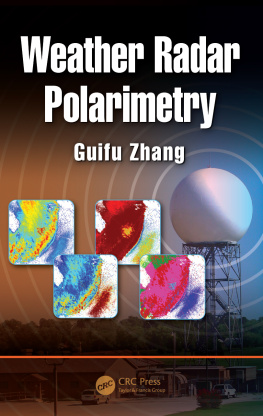





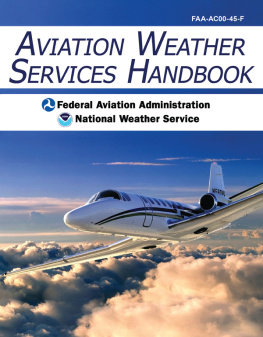

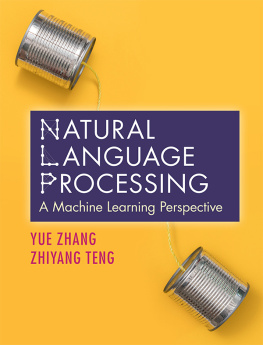



![Zhang Gongzhe [张公者] - Contemporary Chinese Calligraphy [当代中国书法]](/uploads/posts/book/126572/thumbs/zhang-gongzhe-contemporary-chinese.jpg)
